28 de April, 2024

Over the centuries, Portugal has been shaped by deep religiosity. This faith is evident in its beautiful religious temples, famous for their rich diversity of architectural styles, from Romanesque to Neoclassical. But what truly makes Portuguese churches unique goes beyond their architecture. It’s the combination of decorative elements that speaks volumes about the country’s history: gilded woodwork, colorful tiles, stucco adornments, sacred paintings, and sculptures. In this article, we attempt to gather the 10 most beautiful churches in Portugal. This list will feature not only famous churches but also some hidden gems that deserve your visit. It’s a challenging mission that we gladly accept!
Realizing your goal of living in Europe or obtaining European citizenship can be simpler than you think. We offer personalized support to make the immigration process more accessible and uncomplicated.
The Catholic Church has always had significant influence in Portugal, playing a vital role not only in religious life but also in social, cultural, and even political aspects. Many of these constructions were financed by the Portuguese elite. This influence still persists to some extent today. According to the latest census in 2021, 80% of the population still follows this religion. Therefore, we will focus this text on Catholic temples. Before delving into our selection of the most beautiful churches in Portugal, it’s worth understanding the difference between terms such as chapel, church, cathedral, basilica, sanctuary, monastery, and convent.
In general terms, we can categorize them as follows:
Our list will also include Catholic sanctuaries and monasteries:
With that said, let’s get to our selection!
Read also: Top 7 Portuguese heritage

The Cathedral of Évora or Sé de Évora is one of the largest and most important churches in Portugal. Located in the city of Évora, in the Alentejo region, this cathedral is a significant landmark of architecture in Portugal. Its construction began in 1186, precisely during the reign of King Sancho I, and extended over several centuries. Its expansions reflected changes in predominant architectural styles in Europe. Thus, to its original form, which blended Romanesque and Gothic styles, were added parts in other styles such as Renaissance and Mannerism.
The cathedral’s exterior is imposing, with notable towers and a main facade. The interior is equally impressive, with a wide and very high nave, richly decorated side chapels, and an elaborate main altar.
However, what attracts visitors’ attention the most is the Chapel of Bones. Yes, bones. It’s an interior chapel lined with the real bones and skulls of about 5,000 monks. This chapel, built in the 16th century, represents the transitoriness of life and human mortality. It may seem extremely macabre to include it in the list of the most beautiful, yet it receives thousands of visitors every year, being one of the most discussed on TripAdvisor.
If you haven’t visited Évora yet, put it on your list immediately! With just 130 square kilometers and 56 thousand inhabitants, this small city is a gem that brings together incredible monuments, such as a Roman temple, a Gothic historic center, aqueducts from the early Christian era, and beautiful churches (the Church of Lóios deserves your attention!). It’s a must-visit for those who appreciate historical architecture and want to explore Portugal’s rich cultural heritage.
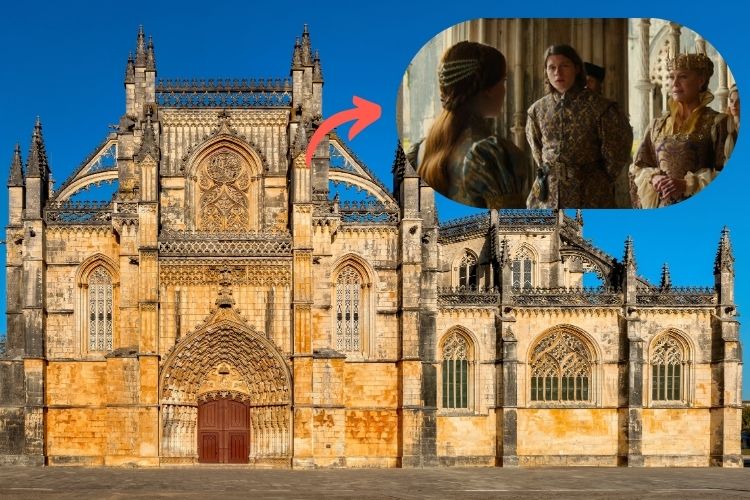
A breathtaking religious heritage, located in the Estremadura region, about 120 km north of Lisbon. The Monastery of Batalha is a true architectural masterpiece in the Gothic style, which has served as the backdrop for many films. It was built in 1386 at the request of King João I, Master of Avis, as a thanksgiving to Our Lady for the victory achieved against the Castilian adversaries in the Battle of Aljubarrota. The building was completed in 1563, recently classified as a UNESCO World Heritage Site and elected as one of the Seven Wonders of Portugal in 2007.
Its interior is especially remarkable. The Founder’s Chapel stands out, commissioned by King João I to serve as a family pantheon. This chapel houses illustrious figures from Portuguese history, including King João I himself and Queen Filipa of Lancaster, as well as the navigator Prince Henry the Navigator. Also buried at Batalha are King Afonso V, King João II, and the heir prince Afonso, in chests built later (20th century).
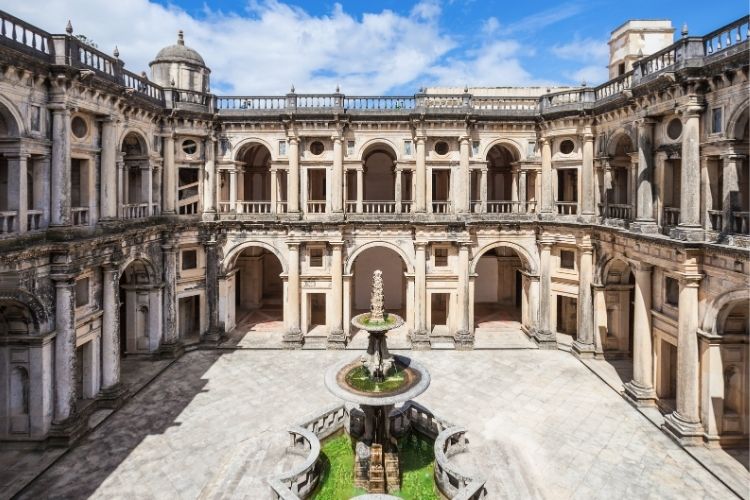
Located in Tomar, it is a historic monument founded in 1162 by the Knights Templar. Initially built as a fortified castle to protect pilgrims and defend the region, it underwent several transformations over the centuries.
After the dissolution of the Order of the Templars in the 14th century, the castle was given to the Order of Christ, which transformed it into a convent and played a crucial role in supporting Portuguese maritime expeditions during the Age of Discoveries. Many of the navigators and explorers who led these expeditions were members of the Order of Christ, including Prince Henry the Navigator, known as the Navigator. He resided at the Convent of Christ in Tomar during part of his life, making it an important center for planning and supporting Portuguese maritime exploration.
One of the most remarkable parts of the convent is the Charola, an octagonal church richly decorated with Templar elements, religious symbols, and Gothic influences. The Manueline windows also stand out, representing a hallmark of Portuguese architecture from that period.
It has been a UNESCO World Heritage Site since 1983 and also served as a setting for the Netflix film “Denzel.”
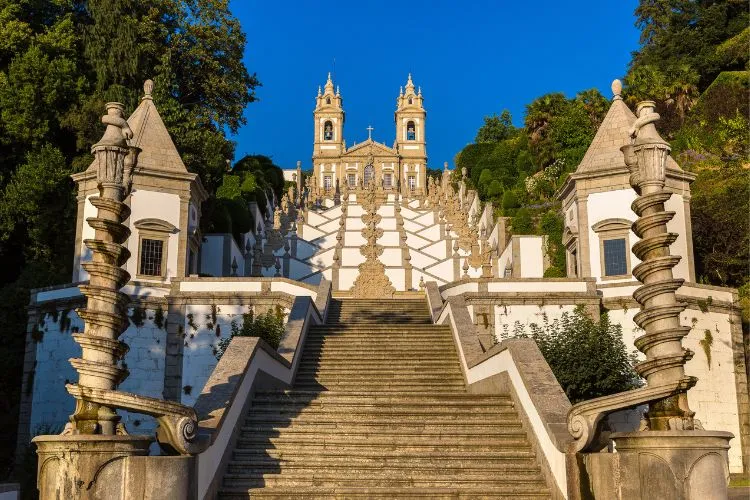
Here we have another monument also classified as a UNESCO World Heritage Site. The Sanctuary of Bom Jesus do Monte in Braga stands out for its composition, an architectural-landscape ensemble that includes: a church, a staircase (where the Stations of the Cross of Bom Jesus are carried out), a funicular, and a green area. In 2023, it set a historic record of visitors: more than 2 million!
The history of the Sanctuary begins in the 14th century when the first pilgrims supposedly erected a cross on top of Monte Espinho. The sanctuary we see today only began to be built much later, in the 18th century, in homage to the Lord of Bom Jesus, an image of the crucified Christ believed to have performed miracles.
The Bom Jesus staircases, with about 500 steps, are divided into three sections: the Portico Staircase, the Staircase of the Five Senses, and the Staircase of the Virtues (faith, hope, and charity).
This sanctuary is a magical place that combines faith, art, history, and natural beauty. An enriching experience for the body and spirit.
In the heart of Porto, the headquarters city of Atlantic Bridge, right on Santa Catarina Street, we can find a beautiful chapel completely covered on its exterior by blue tiles. This is the Chapel of Souls (from the main photo of the article), built in the late 18th century. Also known as the Chapel of Santa Catarina, it housed the Brotherhood of Souls and Wounds of Saint Francis, which previously occupied the also beautiful Monastery of Santa Clara.
Its exterior covering currently consists of about 16,000 tiles that cover approximately 360 square meters of wall. Designed by the artist Eduardo Leite, they date back to 1929 and represent the stages of the life of Saint Francis of Assisi and Saint Catherine, who are venerated in the chapel.
Also, check out our selection of the best hotels in Porto.

If you visit this chapel on a foggy day, you will witness a celestial image. The Chapel of the Lord of the Stone, located on Miramar Beach in Vila Nova de Gaia, is uniquely perched on a rock by the sea. In misty mornings, it appears to float.
It was built in 1686 and has origins in a pagan cult that dates back to pre-Christian peoples, whose deities were worshipped in nature. Local legend tells of a shepherd who discovered an image of Christ in a cave near the site of the current church. This legend may have been a way to explain the presence of a religious site in an area with likely pagan roots.
The temple was later converted to Christianity, maintaining its emblematic status due to its impressive location. It is the center of one of Vila Nova de Gaia’s most traditional pilgrimages, held annually on Trinity Sunday.
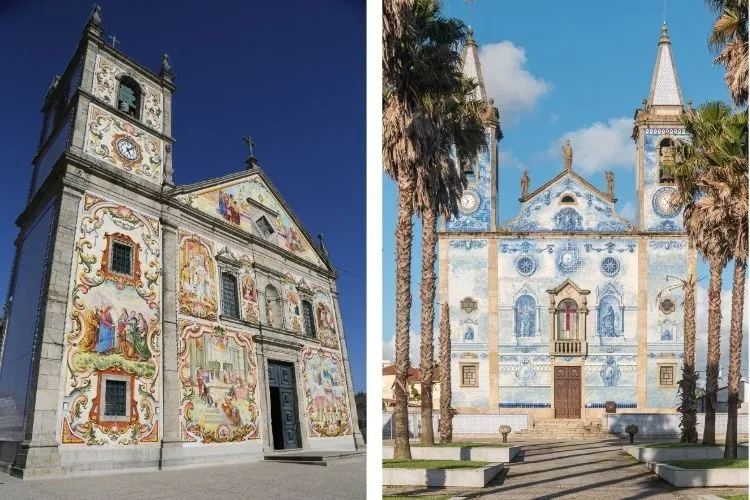
Among the most beautiful churches in Portugal, one of my favorites is the Church of Válega, located in the district of Aveiro, in the municipality of Ovar. Its construction dates back to 1746. The current building dates from after 1787, when it was destroyed in a fire. Today, in its final appearance, it is covered with colorful tiles, both inside and outside. These tiles were applied later, starting in 1958, and were made at the Aleluia Factory.
The façade of the Church of Válega, covered in the 1960s, displays symbolic images representing the church’s foundation with the keys being handed to Peter, the baptism of Constantine, the Council of Trent to combat heresies and establish Christian rules, and the proclamation of the dogma of the Immaculate Conception on December 8. It is undoubtedly one of the most surprising in the country, having been considered the third most beautiful tile panel in the country.
At the top of Mount Santa Luzia in Viana do Castelo stands one of the city’s main symbols. This beautiful sanctuary was built in the early 20th century in honor of the Sacred Heart of Jesus and Saint Luzia, the patron saint of eyesight. From the top, you can enjoy panoramic views of the city of Viana do Castelo, the Lima River, and the Atlantic Ocean.
The Basilica of the Sacred Heart of Jesus, with its imposing dome, is the central building of the sanctuary and houses the venerated image of Santa Luzia. In its architecture, it presents an eclectic architectural style, blending elements of neobyzantine and neo-Romanesque. The basilica can be accessed via the monumental stairway, with about 570 steps, symbolizing the spiritual ascent of pilgrims. Inside, there are chapels and statues depicting the life of Santa Luzia, the Passion of Christ, and other religious events. Additionally, it houses one of the largest pipe organs in the Iberian Peninsula.
The Sanctuary of Santa Luzia was classified as a National Heritage Site in 1986 and attracts thousands of pilgrims every year, especially in September during the pilgrimages honoring the saint for whom it is named.
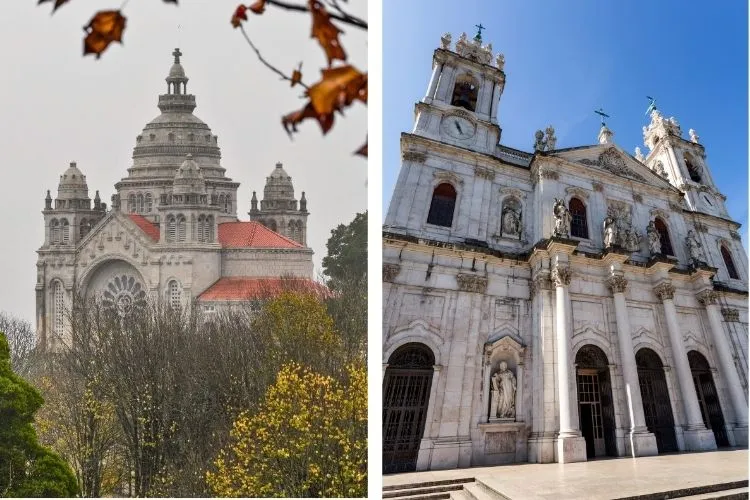
The Basilica of Estrela, located in Lisbon, is a beautiful example of late Baroque and Portuguese Neoclassical religious architecture. It was built in the 18th century by order of Queen Maria I and King Pedro III, as a thanksgiving for the birth of their son and heir, Prince D. José (older brother of D. João VI). It was the first church in the world to be dedicated to the Sacred Heart of Jesus and it is where the Portuguese monarch is buried. Construction began in 1779 and was completed in 1790.
The basilica is known for its imposing dome and its neoclassical facade, inspired by Italian models. The interior is richly decorated with colored marbles (grey, yellow, and pink), as well as sculptures and paintings by renowned artists of the time.
One of the highlights of the Basilica of Estrela is the magnificent life-size nativity scene, made of cork and terracotta, one of the main attractions during the Christmas season in Lisbon. Designed by Machado Castro, this nativity scene includes about 500 figures, recreating biblical scenes in a detailed setting.

The Jerónimos Monastery, officially known as the Monastery of Santa Maria de Belém, is a magnificent example of Manueline architecture located in Lisbon. Its construction began in the 16th century during the reign of King Manuel I to commemorate the success of Vasco da Gama’s voyage to India. Thus, it serves not only as a religious temple but also as a monument to the wealth derived from Portuguese maritime discoveries.
This monastery is renowned for its lavish architectural style characterized by Portuguese Manueline details, including sculpted ropes and knots, maritime motifs, religious symbols, and elements of nature. The monastery’s facade, as well as the columns of its cloister, display a profusion of details reflecting the influence of Portuguese voyages and discoveries.
Inside, the church stands out with its magnificent high altar and the tombs of several important figures in Portuguese history. Here lie buried the navigator Vasco da Gama and the famous poet Luís de Camões.
The Jerónimos Monastery is one of Portugal’s most significant historical and cultural monuments and was designated a UNESCO World Heritage Site in 1983. In 2007, it was recognized as one of the Seven Wonders of Portugal. Moreover, it is one of the most visited destinations in Lisbon, attracting tourists and history and architecture enthusiasts from around the world.
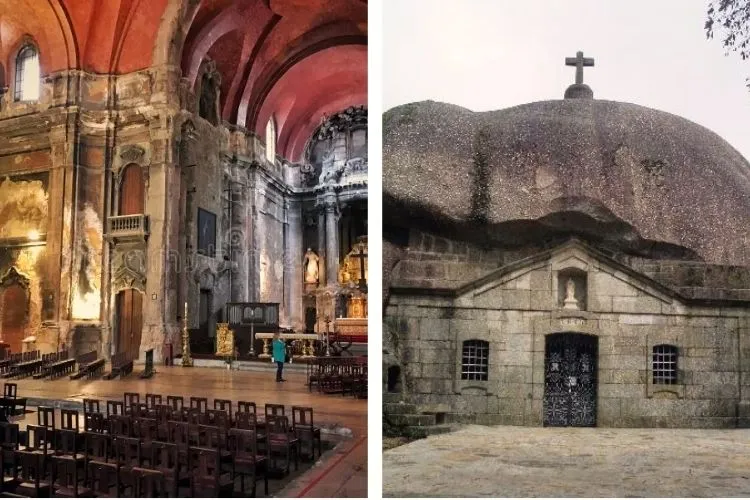
Choosing the most beautiful churches in Portugal is no easy task. Undoubtedly, many deserving churches were left out, whether for their exterior or interior beauty. Here are a few more that deserve attention.

Feeling inspired by the culture and history of this enchanting country? Want to turn this admiration into a life experience? Atlantic Bridge is here to help. Our expertise in citizenship and visas can ease your journey to living in Portugal. Contact us today and discover how we can make your dream of residing in this vibrant country a reality.Escolher as igrejas mais bonitas de Portugal é uma missão nada fácil. Com certeza deixamos de lado muitas que mereciam destaque, seja por sua beleza exterior ou interior. Aproveitamos para citar mais algumas que merecem atenção.

Author:
Atlantic Bridge